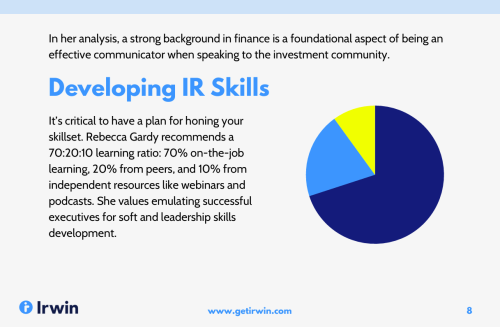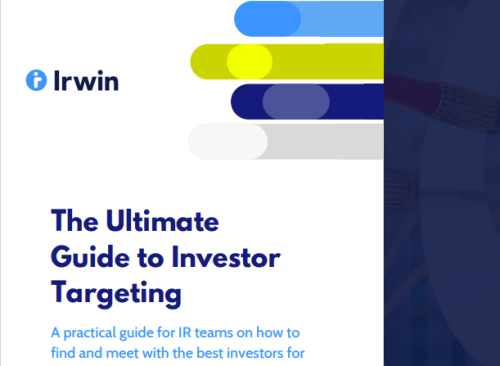Investors in the US are increasingly interested in investment opportunities coming from Europe, and the UK in particular, says IR consultant and paid-research provider Edison. Taking advantage of this trend, the London-headquartered firm added two new hires in January, each focusing on bringing UK and European companies to North America. IR Magazine caught up with Marek Ciszewski and Michael Crawford to find out what companies should be doing when it comes to attracting US money.
Crawford brings 15 years of investor relations and capital markets experience to the New York office, with a focus on capital introductions. Formerly a managing director at PCG Advisory Group, where he led advisory initiatives and investments for the firm’s life sciences division, Crawford has advised more than 100 early-stage companies, says Edison in a statement announcing the new hires.
Ciszewski, who joins the firm’s California office, brings 20 years of IR, equity research, corporate development and senior portfolio management experience to the company. He comes most recently from BMO Global Asset Management where he was global head of healthcare equity research. Ciszewski has also held senior IR and corporate development positions at a number of life sciences companies and is a licensed attorney specializing in banking, corporate finance and securities law.
You have said there is an increasing interest from US investors in European and particularly UK companies – can you expand on the reasons behind this interest?
Ciszewski: As of late, companies in Europe have been trading at comparatively low multiples, which has led many US investors to look across the Atlantic for accelerated returns. US investors will be looking for opportunities that can give them an edge and are actively seeking the science and innovation that European centers of excellence can provide. We have notably had success in marketing life sciences companies from the ‘golden triangle’ of London, Oxford and Cambridge in this regard.
Do you have any advice for UK companies, in particular around discussing Brexit issues?
Ciszewski: This is a great question – Brexit has created a lot of uncertainty! But US investors take a pragmatic approach. It is important to be transparent on perceived exposure, given the potential scenarios, and to be clear on the business plan to mitigate these issues.
Aside from Brexit, what would you say are the top three issues US investors are interested in at the moment? How do you expect these to change, and how should IROs communicate around these issues?
Crawford: The three most pressing issues for US investors are: 1) Monetary policy – will the Fed raise interest rates? 2) Trade – the winners and losers, and 3) Politics – especially as we near the 2020 US presidential election. Both monetary policy and trade are tangentially related to the pace of economic growth in the US and throughout the rest of the world, so perhaps less of a US-centric phenomenon. Investors will have a macro view and hedge their positions accordingly.
The presidential election, however, is likely to be a key focal point as we approach 2020. Again, IROs should be transparent in communicating any exposure to geopolitical issues but, moreover, focus US investors on the evolving business fundamentals, important milestones and KPIs to give a portfolio manager confidence in the investment proposition.
In what way (if any) do US investors differ in their investment approach and how can European companies best prepare for meeting these investors?
Ciszewski: US investors typically have a greater appetite for risk, which can be very attractive to early-stage innovation companies seeking capital. In life sciences, US healthcare specialists will often have experts within each healthcare vertical, so be prepared to delve deeper into the science.
Given the size of the US market there will be more ‘shots on goal’ to find the right investment partners, but it is important to prepare ahead of time to ensure the right person is being targeted with the right message.
In general, do all new meetings need to involve senior management? In your experience, is there much opportunity for IR-only meetings with US investors?
Ciszewski: It ultimately depends on the company and the investor. Larger funds and institutions will want to see the C-suite and close to 100 percent of first-time meetings will involve the senior management team. In our view, it’s critical, particularly in the initial meeting with an institution, that a C-suite-level executive is present.
As clichéd as it sounds, the advice to ‘bet on the jockey not the horse’ still holds true. Institutions want to feel comfortable not only with what but also with who they are investing in. That said, smaller investors are more than happy starting with the IRO.
What are some of the common mistakes you see European companies make when it comes to targeting US investors?
Crawford: European companies have to look critically at their investment messaging to US investors. US investment houses may not be up to speed on specific economic policies facing particular countries so it’s important for European firms to break down the industry they operate in, specific to their region, to educate US investors as to their customer base, as well as their US publicly traded peers, and walk them through any regulatory process or issues they may have to adhere to. If their shareholders are located in Europe only, it is helpful to provide US investors with some background on who these holders are so they get a better understanding of the shareholder base.
Ciszewski: We see a number of companies solely target large-scale institutions not realizing the liquidity mandates and necessary diligence process these investors often have when making investment decisions. They undervalue liquidity players and smaller funds that can have an impact not only on the open market but also on direct investments. European companies also need to recognize that US investors have different personalities: the culture is different and the mentality is different.
Finally, in your experience, what do US investors want to see from IR?
Crawford: Transparency is hugely important for US investors, with communications materials, press releases and websites that properly reflect the company, market opportunity and investment thesis. US investors also want access to management; in particular, the smaller investors (typically those under $500 mn in assets under management) want the IR team to facilitate this access.
Conversely, the challenge for IR professionals is to be an effective buffer between management and outside investors. Treat every US investor like your company’s number one shareholder: make it feel important by providing it with a first-class service. Go above and beyond in communicating new developments, provide unique information such as peer analysis reports and specific industry news. And finally, put pressure on your US IR firm to ensure you stay top of mind and are constantly being proactive rather than reactive, efficiently working on your behalf to build relationships with target stakeholders.










